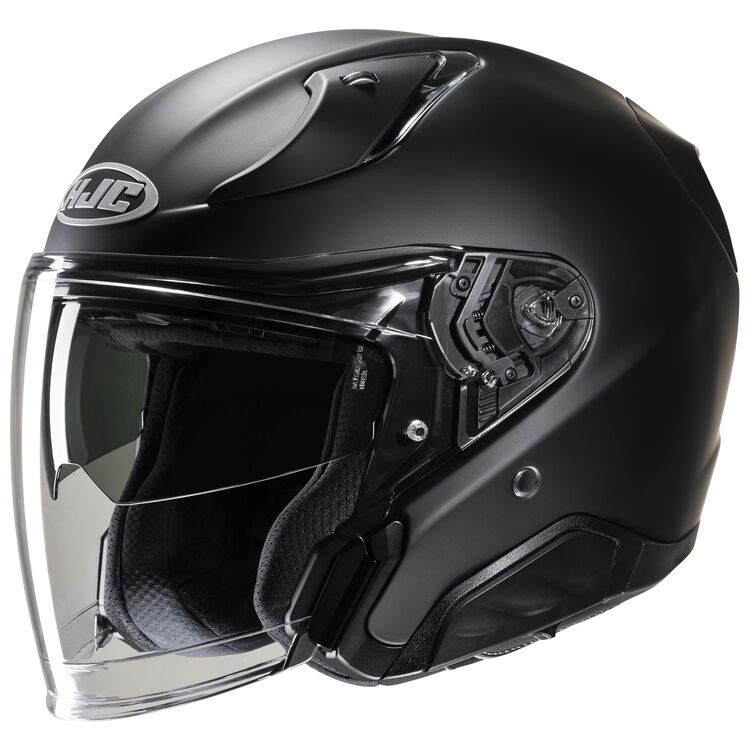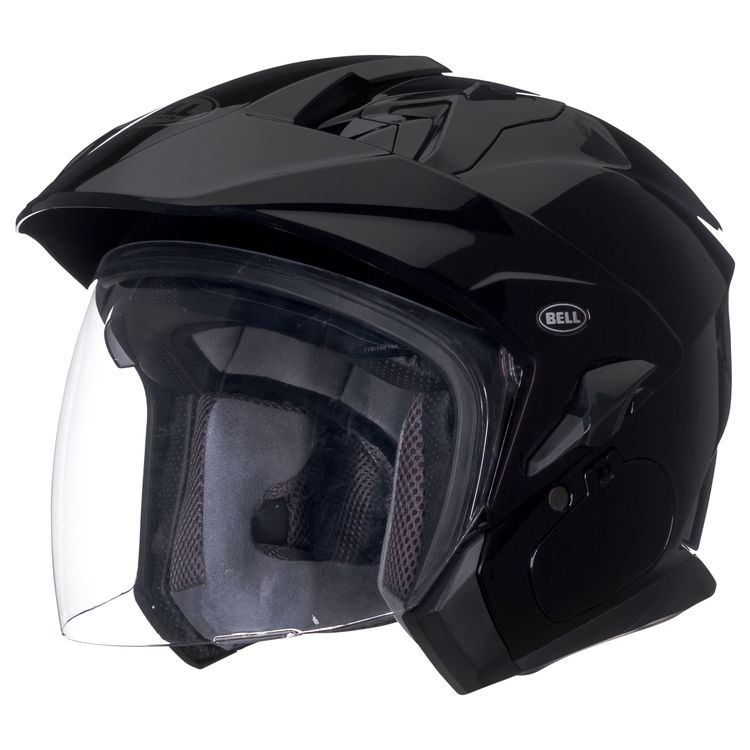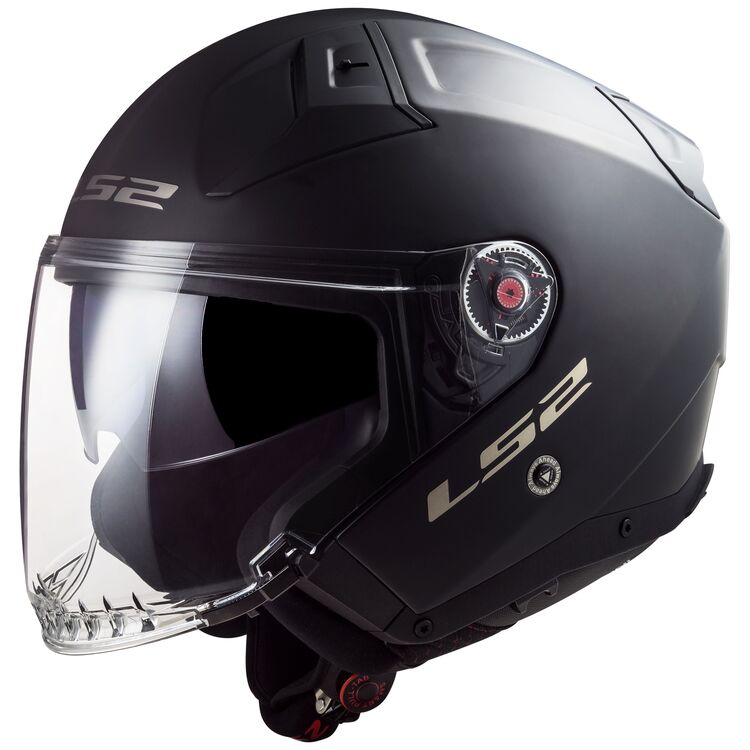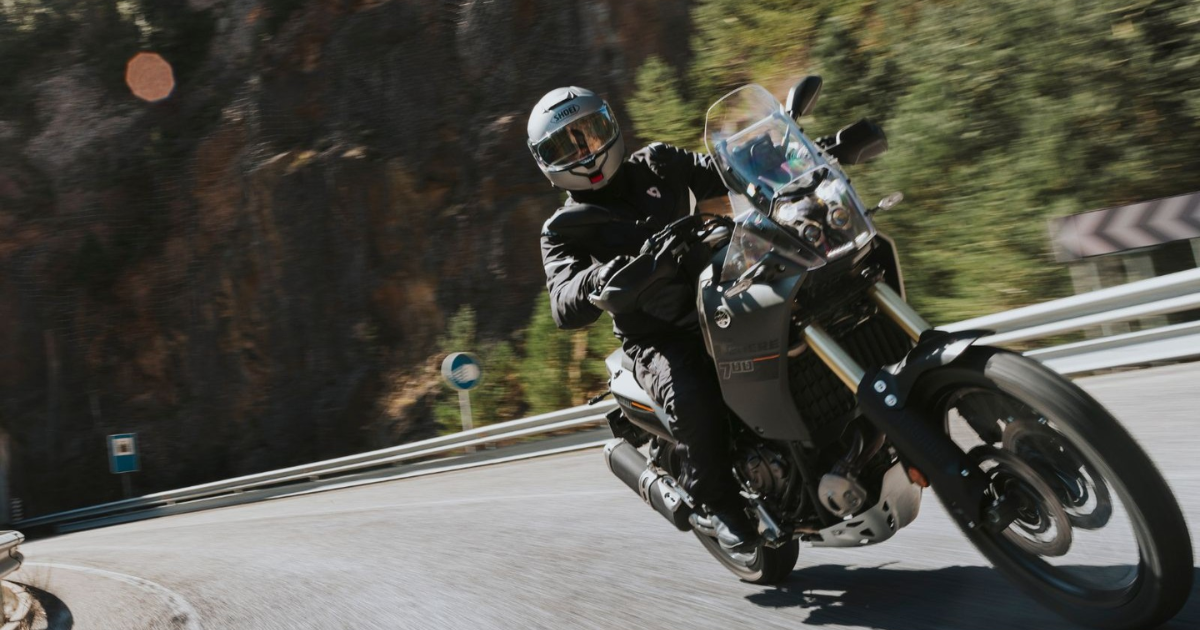
Best Bluetooth Open Face Helmets for Riders in 2026
left for contents
Want that feeling of wind and freedom without giving up on connection? Open‑face helmets with built‑in comms seem like the holy grail for riders who don’t need a full‑face lid but still want to chat, stream or get directions.
The truth is that not all “smart” three‑quarter lids are created equal. Some pile on weight to add gadgets, others skimp on ventilation, and a few only work if you buy their proprietary electronics.
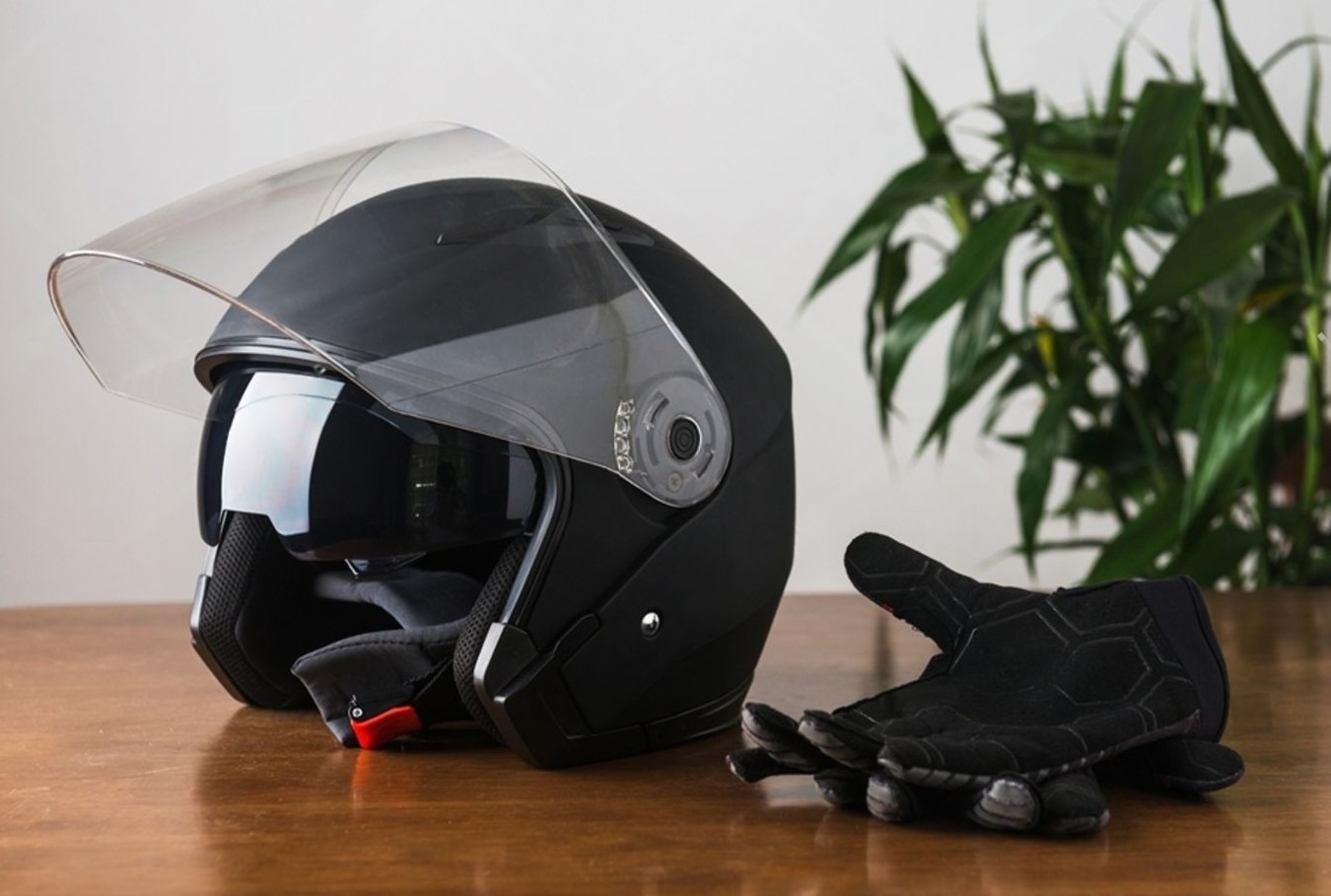
Below you’ll find the handful of helmets we trust on our heads and recommend to other riders because they balance comfort, protection and communication.
Before we dive in, let’s get a few things out of the way:
- Open‑face helmets will always trade some protection for freedom. You’re exposing your jaw to the elements, so focus on lids with premium shells and EPS liners to maximize the protection you do have. The good news is that advances in materials mean three‑quarter helmets can meet the same DOT standards as many full‑face models.
- Integrated Bluetooth is convenient but not always lighter. In some cases a built‑in unit adds more bulk than simply strapping on a separate communicator. We’ll point out where the trade‑off is worth it.
- Not all comm systems are created equal. Mesh‑equipped helmets like the Sena Surge can talk to dozens of riders on multiple channels, while Bluetooth‑only lids like the Mag‑9 rely on add‑on kits. Decide how you ride before picking a system.
- The cheapest helmet isn’t always the worst. Our budget pick offers incredible ventilation and modularity, but you’ll need to add your own clamp‑on comms to match the connectivity of its pricier rivals. We explain why it still deserves a place on the list.
Which Helmet Fits Your Riding Style?
Choosing the right open‑face helmet is about more than just price or looks. We all ride differently, and the situations we find ourselves in influence what features matter. Here’s a quick guide to help you identify which of these five helmets matches your own habits:
Vintage café looks meet modern tech with built-in Mesh Intercom and Bluetooth 5.2. No setup hassle—just throw it on and ride connected.
Uses Shoei’s AIM shell and multi‑density EPS for superb safety; features a long internal sun visor, improved ventilation and wind‑tunnel‑tested aerodynamics. Designed to integrate seamlessly with Sena SRL/SRL2 systems.
Lightweight PIM Evo shell and extended chin EPS give a full‑face feel; anti‑fog sun visor and noise‑reducing design, plus compatibility with second‑generation Smart HJC comms.
Versatile three‑quarter helmet that can run with or without shield and visor, with a drop‑down sunshield and outstanding ventilation. Built‑in speaker pockets accept Sena SMH10 or Cardo units.
High Performance Fiberglass Composite shell keeps weight down; optically correct “A Class” face shield and built‑in sun visor; removable moisture‑wicking liner and fully adjustable multi‑port ventilation make it perfect for city rides and weekend tours.
Below we expand on how each helmet’s features translate into everyday riding advantages—and where they might fall short.
Sena Surge – Best for Retro Style & Café Runs
If your idea of a perfect ride includes espresso stops and vintage bikes, the Sena Surge lets you look the part while staying more connected than any old‑school lid deserves. With its smooth, fiberglass composite shell and throwback silhouette, the Surge looks like it belongs in a 1970s race poster. Hidden behind that style is the same Mesh 2.0 technology found on Sena’s top‑end communicator. Open Mesh mode offers nine channels so you can chat with a group of buddies without pairing each unit individually. For more privacy, switch to Group Mesh and create a closed network—no more random voices interrupting your ride.

The built‑in unit also supports Bluetooth 5.2, letting you stream music or GPS prompts from your phone while simultaneously talking on intercom. Its 40 mm high‑definition speakers and hidden microphone deliver clear audio at speed, and a snap‑on sun peak shades your eyes when the sun sits low in the sky. Best of all, the Surge boasts an incredible 21‑hour talk time, meaning most riders only need to charge it once per week. That long battery life comes from placing the battery inside the helmet’s shell—no big external pack to catch the wind.
The downside? There’s no way to swap out the integrated comm if newer tech comes out. You can’t add your own clamp‑on unit either because the Surge has no speaker cutouts. The silver lining is that Sena’s over‑the‑air firmware updates keep the Mesh system current, so you’re not stuck with outdated software. If you want modularity, though, look at the Mag‑9 or J‑Cruise II.
Seamlessly integrated Sena Mesh and Bluetooth communication for the ultimate connected riding experience.
- Integrated Bluetooth 5.2 with Mesh Intercom for rider communication
- Hidden microphone that's shockingly clear
- Lightweight fiberglass composite shell for better impact absorption
- Removable and washable interior for easy maintenance
- Unable to upgrade the intercom
- Have to carry the helmet to charge it
Our review: We’ve featured the Sena Surge in our open-face helmets guide, highlighting its seamless comms integration, solid fiberglass build, and standout value compared to pairing a separate headset with a premium lid.
Shoei J‑Cruise II – Premium Touring & Naked Bike Champion
Shoei helmets are legendary for their build quality and attention to detail. The J‑Cruise II continues that tradition while adding features touring riders will appreciate. The heart of this lid is Shoei’s Multi‑Ply Matrix Advanced Integrated Matrix (AIM) shell paired with a multi‑piece EPS liner, a combination that disperses impact energy across multiple layers. A patented micro‑ratchet chinstrap makes fastening quick and secure.
What sets the J‑Cruise II apart is how comfortable it makes long rides. The internal sun shield has been lengthened for better coverage. An all‑new “first position” visor opening provides just enough gap to let air in without fogging the shield when you’re crawling through traffic. Shoei’s wind‑tunnel sessions added a second intake port to the top vent, boosting airflow by around 30 percent and improving exhaust flow by 20 percent—numbers you can feel when cruising on a humid day.
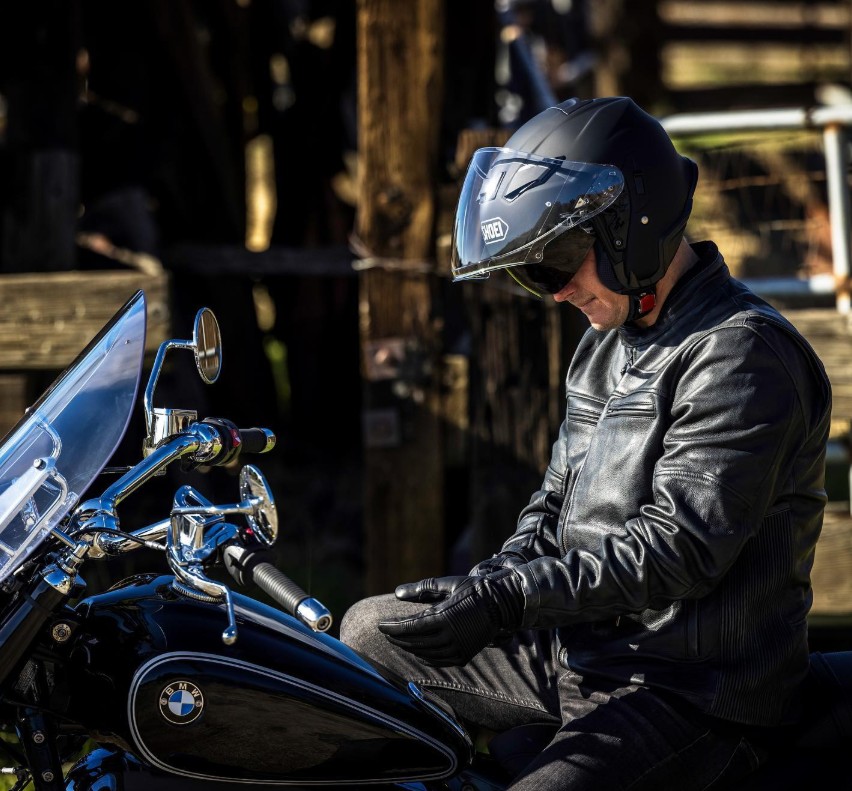
Noise reduction is also big news here. The shell’s integrated spoiler, new window beading and redesigned sun visor mechanism combine to keep wind roar to a minimum. The shield and base plate system offers a large, distortion‑free field of view and quick tool‑less changes. Inside, the 3D Max‑Dry interior wicks sweat twice as fast as nylon and can be adjusted or replaced to fine‑tune the fit.
Shoei designed the J‑Cruise II to pair with Sena’s SRL and SRL2 comm units, which snap into dedicated cavities inside the shell. This integration means you keep the clean lines of the helmet and the aerodynamics aren’t upset by a bulky clamp. You do have to purchase the SRL unit separately, which increases the overall price. If you want a more affordable integrated option, the Outrush R or Surge might suit you better. But for riders who spend hours in the saddle and appreciate premium craftsmanship, the J‑Cruise II is hard to beat.
The Shoei J-Cruise II merges open-face freedom with near full-face functionality—large shield, deeper sun visor, AIM shell, and premium comfort for urban and touring use.
- Excellent visor clarity with Pinlock-ready shield and deep sun visor
- Strong ventilation via triple brow vents and rear exhaust
- Fit flexibility from multiple shell sizes and cheek pad options
- Quiet for an open-face thanks to improved aerodynamics and tight visor seal
- Still lacks a chin bar—face protection is limited in more serious impacts
- No Pinlock insert included despite being Pinlock-ready
Our review: We featured the J-Cruise II in our Best Shoei Helmets guide, praising its quiet open-face comfort, improved ventilation, and seamless SRL comms integration.
HJC RPHA 31 – Performance Street & Sport Favorite
HJC’s RPHA line has long been associated with lightweight, race‑bred helmets. The RPHA 31 brings that engineering to the open‑face world. Its Premium Integrated Matrix (PIM) Evo shell uses a blend of carbon‑aramid fiber and natural materials to achieve impressive impact resistance while keeping weight down. A multi‑density EPS liner further absorbs and disperses energy. The result is a three‑quarter helmet that feels as stable as a full‑face when you tuck behind your windscreen.
HJC hasn’t forgotten creature comforts either. A new dynamic multi‑step sun visor offers smoke‑tinted, anti‑fog coverage and can be positioned closer to your face for optimal shading. The bottom‑positioned slider is easy to find with gloves on, and the visor mechanism stays put when you hit bumps. A visor deflector and reinforced visor holder work together to cut down wind turbulence and seal the visor against the shell. Meanwhile, the extended chin EPS gives the RPHA 31 a more secure, full‑face‑like feel around your jaw.

Inside, the RPHA Premium Fit interior uses advanced anti‑bacterial fabric for moisture wicking and quick drying. 3D contour cheek pads and reflective details enhance comfort and safety. The cheek pads are interchangeable across all sizes, letting you customize the fit without buying a new helmet. HJC’s Smart HJC 2nd Generation Bluetooth systems were developed in cooperation with Sena and slot directly into the RPHA 31’s shell, maintaining balanced weight distribution and aerodynamics. They’re sold separately, so you can ride without a communicator or upgrade later.
One possible drawback is price. The PIM shell and bespoke comms integration mean the RPHA 31 sits closer to premium territory. However, if you’re a sporty rider who wants a three‑quarter helmet that offers full‑face‑like stability and high‑tech options, this is the one to beat. The shell is also DOT certified, giving you confidence when you’re pushing the pace.
An advanced open-face helmet that blends sport shell strength and modular visor tech, giving urban riders protection, clarity, and functionality without sacrificing style.
- Lightweight composite shell for impact protection
- Pinlock-ready visor with built-in sun shield
- Adjustable fit with multiple shell sizes
- Aerodynamic design reduces wind noise
- Open-face leaves chin exposed to impact
- Sun visor may let in light at certain angles
Our Review: The RPHA 31 is on our list for a future review, but early impressions point to strong aerodynamics, clear sun visor performance, and seamless Smart HJC integration.
Bell Mag‑9 – Best Budget‑Friendly Cruiser Lid
Bell’s Mag‑9 has been a staple among riders who love the simplicity of open‑face helmets. It’s not “smart” out of the box, but its clever design makes adding comms easy. The polycarbonate shell and multi‑size EPS system let Bell offer three shell sizes to maximize fit and minimize weight. Tipping the scales at about 1,480 g (3.26 lb) in medium, it’s light enough for all‑day comfort yet sturdy enough to earn DOT certification.
Flexibility is the Mag‑9’s calling card. You can run it in four configurations: with or without the clear face shield, and with or without the peak visor. A drop‑down sunshield provides quick relief from glare. Bell’s Velocity Flow ventilation system delivers serious airflow, making this one of the coolest three‑quarter helmets available. A removable interior liner makes cleaning simple.

The Mag‑9 doesn’t ship with communications electronics, but it was designed around the Sena SMH10 and Cardo Q1/Q3 units. There are convenient speaker pockets inside the cheek pads and a special clamp system for the SMH10 so the unit doesn’t stick out awkwardly. This means you can upgrade to Bluetooth when you’re ready or leave the helmet unencumbered if you prefer peace and quiet. If you’re on a budget or already own a compatible Sena or Cardo headset, the Mag‑9 is an excellent value.
Its one big trade‑off is that the polycarbonate shell and open nature mean more wind noise compared with premium models. At highway speeds you’ll want earplugs. The silver lining is that you can remove the visor and shield for short urban rides, making the helmet even lighter and cooler. For a full upgrade path with integrated comms, the Surge might make more sense.
Feature-rich with a drop-down sun visor and integrated Sena Bluetooth communication system at a great price.
- Integrated drop-down sun visor and clear shield
- Compatible with Sena 10S Bluetooth system
- Excellent airflow with velocity flow ventilation
- Comfortable fit with plush, removable liner
- Sena Bluetooth unit and clamp kit sold separately
- Main visor can feel stiff or notchy
- Noise can increase at high speeds without fairing
Our Review: We featured the Mag-9 in our open-face helmets guide, noting its versatile drop-down sun visor, solid ventilation, and plush liner that make it a great value pick.
LS2 Infinity II – Light & Airy Commuter and Touring Companion
Not everyone needs built‑in electronics. LS2’s Infinity II proves that a well‑designed open‑face helmet can deliver modern comfort without the complexity of a modular or “smart” lid. At its core is a High Performance Fiberglass Composite (HPFC) shell that combines light weight with excellent impact absorption. This construction means less strain on your neck during long days yet still meets both DOT FMVSS 218 and ECE 22.06 standards, so you’re not compromising safety for comfort.
The Infinity II comes with an optically correct “A Class” polycarbonate face shield that is scratch‑ and UV‑resistant. Flip it up when you want a full open‑face feel or drop it down for wind and rain protection. A separate built‑in sun visor slides into place to shield your eyes at midday. Swapping shields is easy thanks to the helmet’s quick‑release, quick‑change mechanism.

Comfort features abound. A removable, washable and hypoallergenic liner wicks moisture to keep you cool, and 3D laser‑cut cheek pads eliminate hot spots during extended rides. The micrometric quick‑release chin strap lets you secure or remove the helmet with one gloved hand. Beneath the shell, multi‑density EPS foam absorbs energy in a crash, while an Emergency Release Cheek Pad System allows first responders to remove the helmet without stressing your neck.
Ventilation is handled by fully adjustable multi‑port intake and exhaust vents with channels molded into the EPS, circulating fresh air and exhausting heat. Because the Infinity II doesn’t include an integrated comm system, you’re free to choose any Bluetooth unit that fits—speaker pockets and smooth interior panels make installation straightforward. The trade‑off is obvious: you’ll need to buy a separate communicator, and the open design means more wind noise than a modular helmet. But if you value a lightweight, feature‑rich lid for urban commutes and weekend tours, the Infinity II is a standout.
An open-face helmet that combines lightweight fiberglass strength and ventilation with modern safety standards—designed for riders who want comfort, visibility, and simplicity without extra gadgets.
- Light yet strong fiberglass shell
- Plush, moisture-wicking liner
- Built-in sun and clear shields
- Four shell sizes for better fit
- Wind noise at higher speeds
Our review: The Infinity II isn’t on our site yet. It’s on our test list, and we’ll publish hands-on impressions once we’ve logged proper miles.
Comparison Table
Below is a side‑by‑side look at the key specifications of these helmets. Use this as a quick reference when deciding which features matter most to you.
| Helmet | Shell / Weight | Built‑in Comms | Talk & Intercom Range | Ventilation & Shield | Certification |
|---|---|---|---|---|---|
| Sena Surge | Fiberglass composite three‑quarter shell; approx. 1.1 kg (manufacturer spec) | Mesh 2.0 & Bluetooth 5.2 with 40 mm HD speakers | Up to 21 hours talk time, Open Mesh with 9 channels and Group Mesh for private groups | Removable snap‑on sun peak; multiple top vents for airflow | DOT approved |
| Shoei J‑Cruise II | Multi‑Ply Matrix AIM shell with multi‑density EPS; weight around 1.47 kg (depends on size) | Comms ready (Sena SRL/SRL2 sold separately) | Depends on communicator; SRL units provide Bluetooth intercom with up to 1.6 km range (with SRL Mesh optional) | Two top intake vents plus enlarged exhaust; lengthened sun visor and quick‑change shield | DOT certified; micro‑ratchet chinstrap |
| HJC RPHA 31 | PIM Evo carbon‑aramid hybrid shell with extended chin EPS; about 1.45 kg | Comms ready for Smart HJC 2nd Gen (sold separately) | Depending on installed Smart HJC unit; supports up to 4‑way intercom via Sena‑developed system | Anti‑fog multi‑step sun visor, visor deflector and enhanced ventilation; moisture‑wicking interior | DOT certified and five‑year warranty |
| Bell Mag‑9 | Polycarbonate shell with three EPS sizes; 1.48 kg | Comms ready for Sena SMH10 or Cardo Q1/Q3 (sold separately) | Talk time depends on installed unit; typical 10‑12 hours with SMH10 | Velocity Flow ventilation, drop‑down sunshield, removable face shield and peak | DOT certified |
| LS2 Infinity II | High Performance Fiberglass Composite (HPFC) open‑face shell; approx. 1.5 kg | None built in; works with add‑on Bluetooth systems (speaker pockets inside) | Depends on installed communicator; choose your favorite unit | Top intake + rear exhaust; Full clear shield + drop sun visor, quick-release | DOT & ECE |
Buying Guide – How to Choose Your Open‑Face Bluetooth Helmet
With so many features to consider, picking the right three‑quarter helmet can feel overwhelming. Here are the factors we prioritize when recommending lids to friends and tour clients:
Safety Certification
Always choose a helmet with the relevant certification for your region. At a minimum look for DOT in the United States, but ECE or Snell add extra assurance. The Outrush R even offers dual homologation for open and closed positions.
Shell Material & Weight
Fiberglass and advanced composites offer better impact absorption and lower weight than basic polycarbonate. Lighter helmets like the Surge reduce neck fatigue on long rides, whereas modular designs add weight but offer versatility.
Ventilation
Good airflow keeps you cool and focused. Look for multiple intake and exhaust vents. The J‑Cruise II’s wind‑tunnel‑tested system moves more air than previous models, while the Mag‑9’s Velocity Flow ventilation is legendary for hot climates.
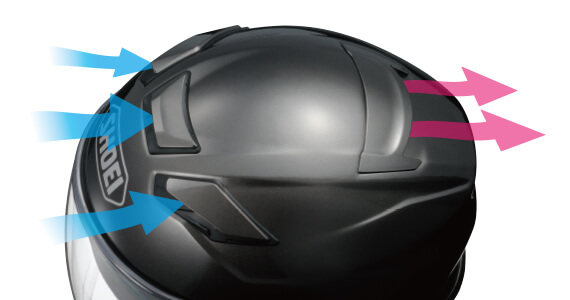
Shield & Sun Visor
A clear, scratch‑resistant face shield with anti‑fog coating is a must if you ride in varying conditions. Internal sun visors are convenient but should not compromise eye protection. HJC’s multi‑step sun visor can be positioned closer to your face, and Sena’s Surge comes with a removable sun peak for a retro look.
Integrated vs Add‑On Comms
Decide whether you want a built‑in system or the flexibility to choose your own communicator. Integrated units like the Surge and Outrush R offer tidy packaging and fewer installation hassles but can’t be swapped later. Comms‑ready helmets like the J‑Cruise II, RPHA 31 and Mag‑9 let you pick the unit that fits your budget and tech needs.
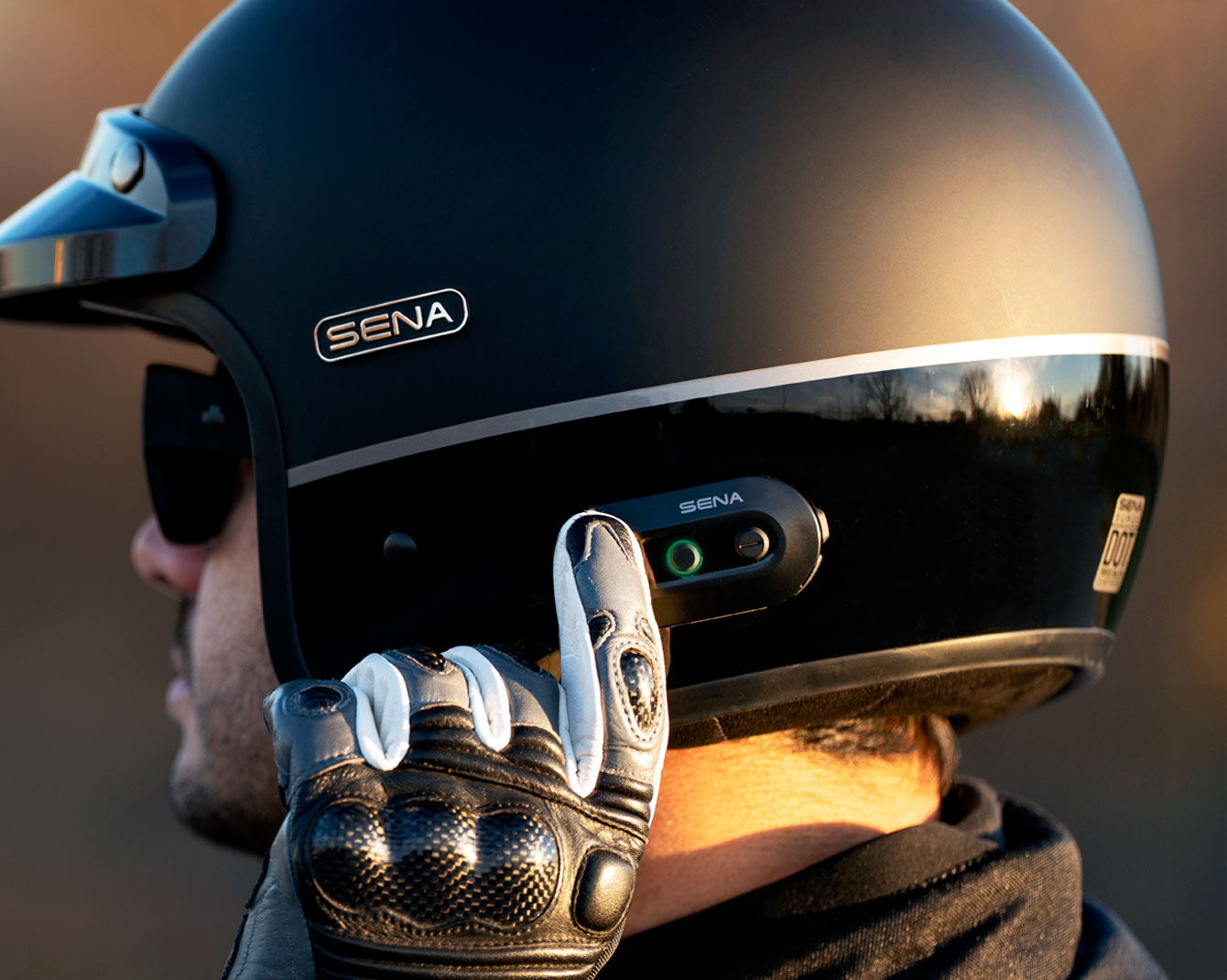
Battery Life & Range
If you spend all day on the road, battery life matters. The Surge leads the pack with 21 hours of talk time. The Outrush R’s 12‑hour battery is still respectable and recharges in about two and a half hours. Range depends on line of sight and network type—Mesh networks like in the Surge allow more riders and channels.
Fit & Comfort
Try helmets on whenever possible. Look for removable pads and adjustable cheek pieces. HJC’s interchangeable pads and Shoei’s adjustable Max‑Dry liner help you dial in a custom fit. Weight distribution also affects comfort; modular helmets may feel top‑heavy if not balanced.
Style & Aesthetics
Finally, pick something you’ll be happy to wear. The Surge’s retro vibe might turn heads at your local café, while the J‑Cruise II has a sleek modern look. The Mag‑9 offers multiple colors and is easiest to customize with accessories.
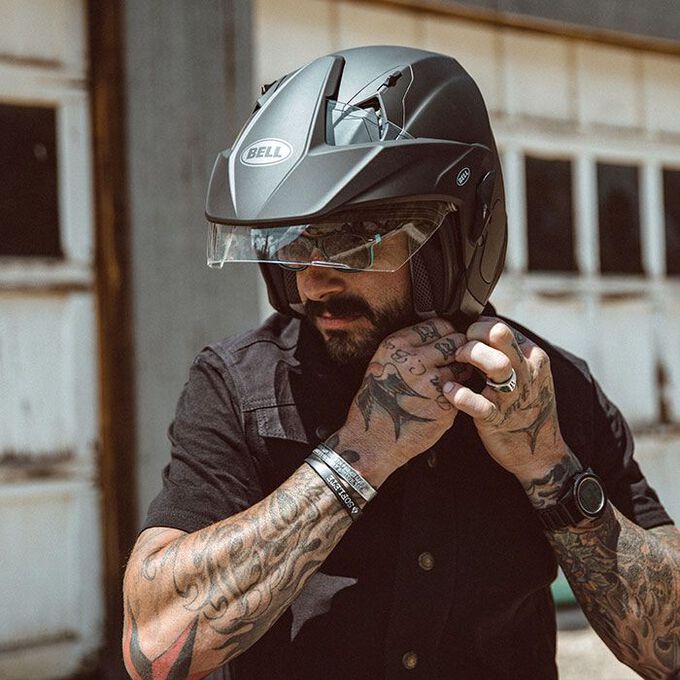
Final Thoughts
Modern open‑face helmets with Bluetooth are no longer compromised toys. Thanks to advances in shell technology, ventilation and integrated electronics, you can enjoy the wind in your face and stay connected without bulky clamp‑on units.
Whether you’re chasing sunrise over mountain passes or just commuting through busy streets, there’s a helmet here that will make your rides more enjoyable and safe. Let the freedom of open‑face riding meet the convenience of modern communication, and remember: wear what fits, charge your battery and never stop exploring.
Related

Carbon Fiber Modular Helmets: Ultimate Flip-Up Lids
Discover carbon fiber modular helmets that deliver flip-up convenience, lightweight strength, and serious protection for every ride.



